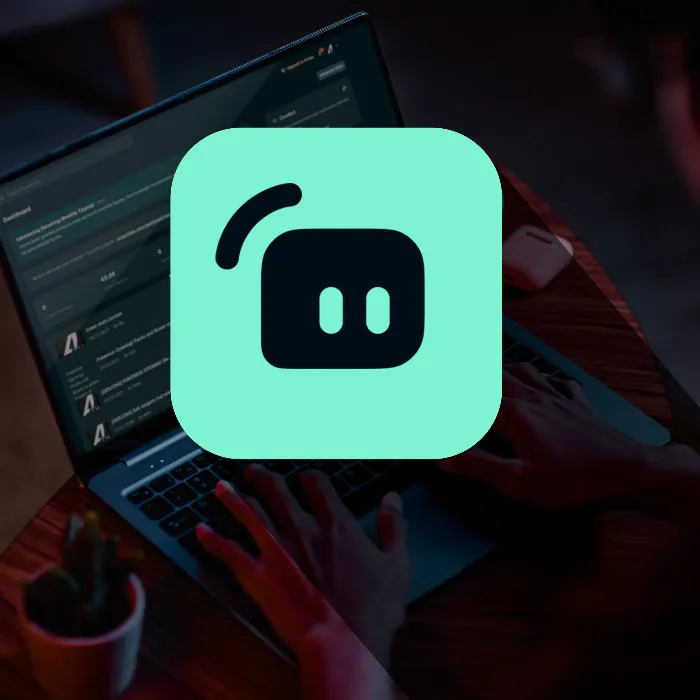Customizing commands in Streamlabs OBS can make the difference between a captivating stream and an average one. If you want to engage your viewers and use interactive elements in your live broadcasts, commands are indispensable. In this guide, I'll show you step by step how you can correctly set up your commands in Streamlabs OBS so that your streams become more dynamic and entertaining.
Key Takeaways
- Commands offer interactivity and engagement during streams.
- Each command can be easily added, edited, or deleted.
- Variables allow personalized responses and dynamic content.
Step-by-Step Guide to Setting Up Commands
Step 1: Enable Cloudbot and Check Settings
To create your own commands in Streamlabs OBS, you need to activate the Cloudbot. You can do this by clicking on the Cloudbot icon in the left sidebar. Make sure that the Cloudbot is enabled and has been granted moderator permissions to ensure smooth functionality.
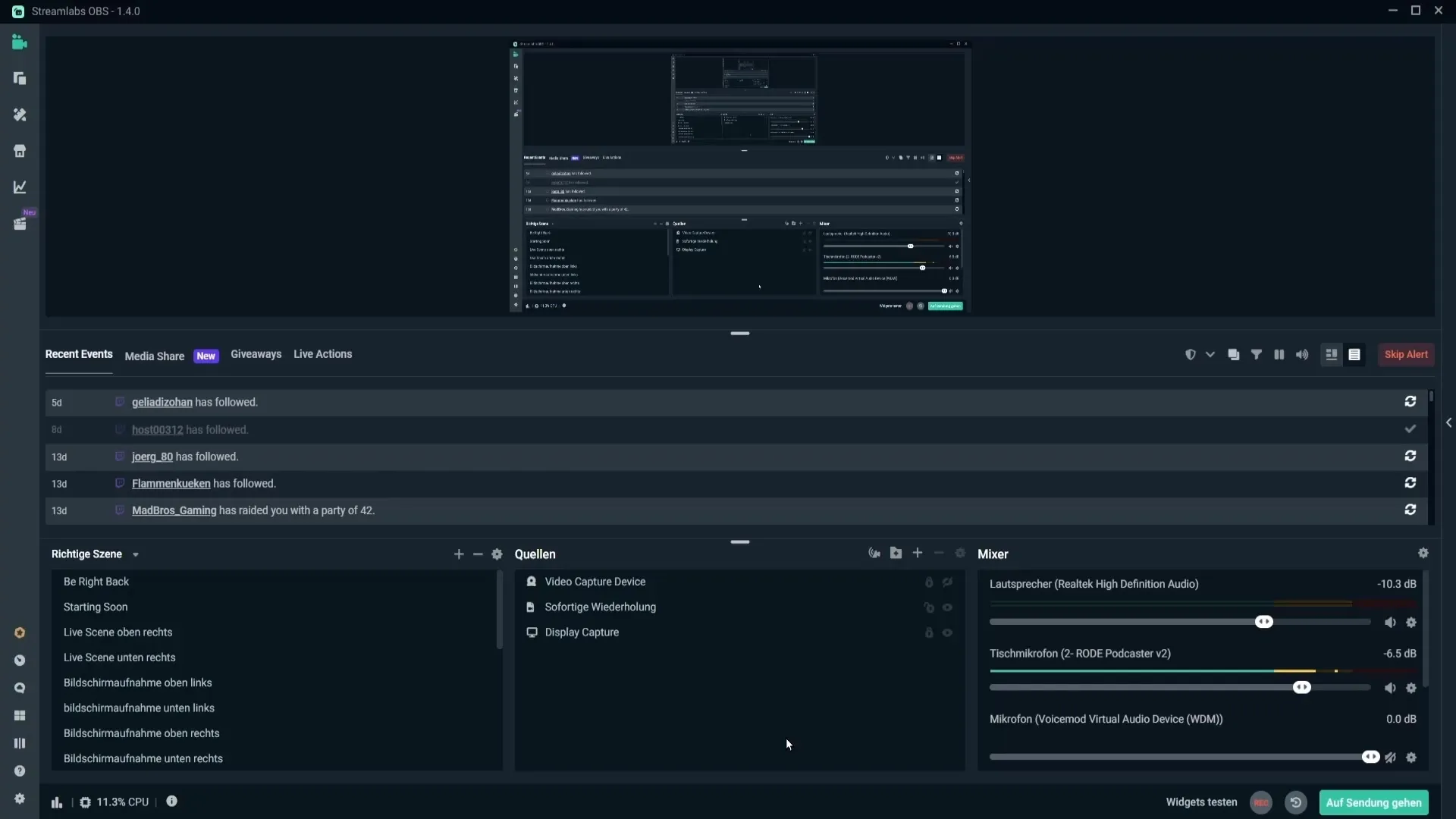
Step 2: Navigate to the Command Settings
After activating the Cloudbot, navigate to the settings for commands. Click on the "Commands" tab, and you will see different categories such as "Default," "Custom," and "Giveaway." Here you can add new commands or edit existing ones.
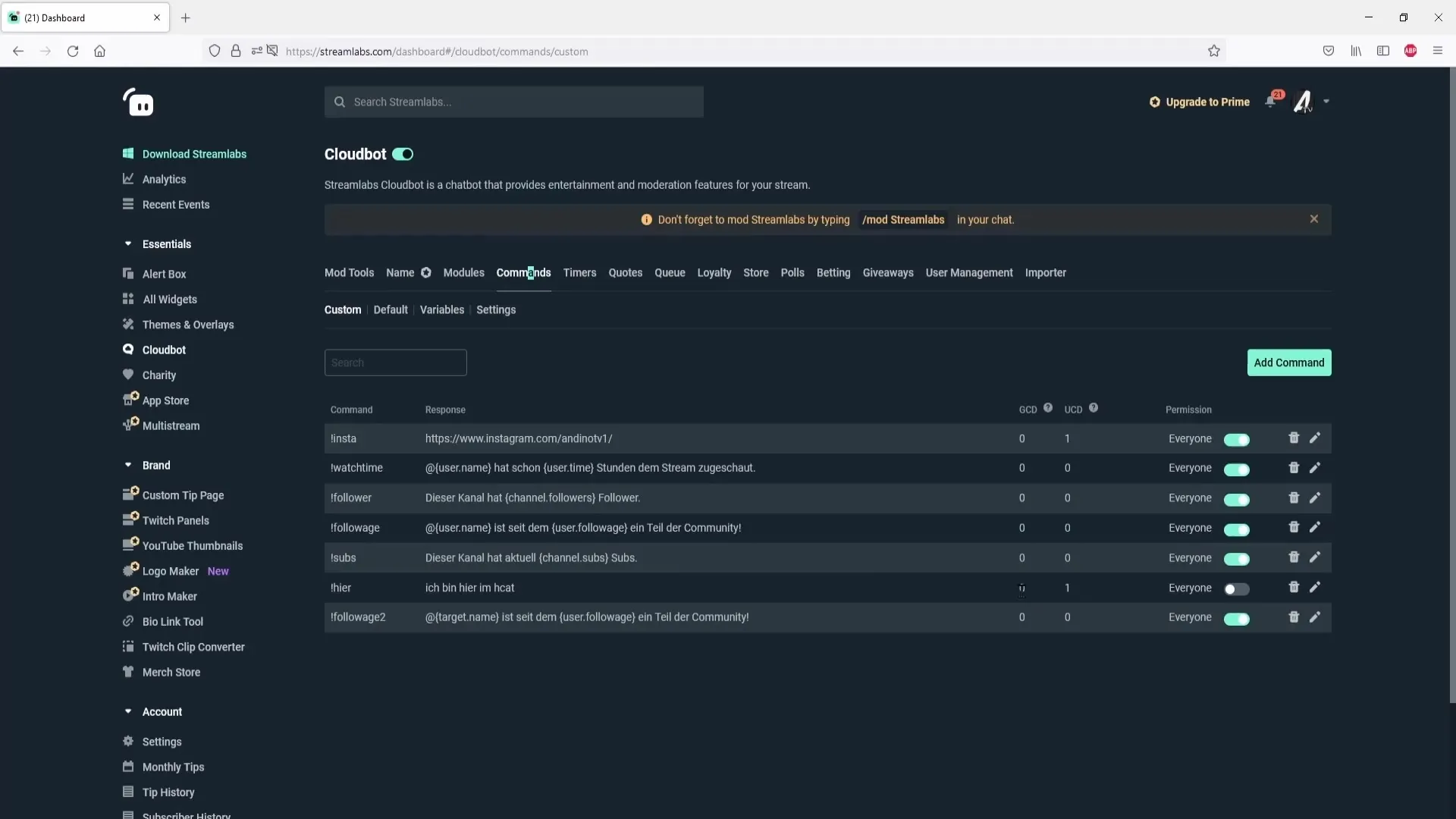
Step 3: Add a New Command
To add a new command, type the command!add command
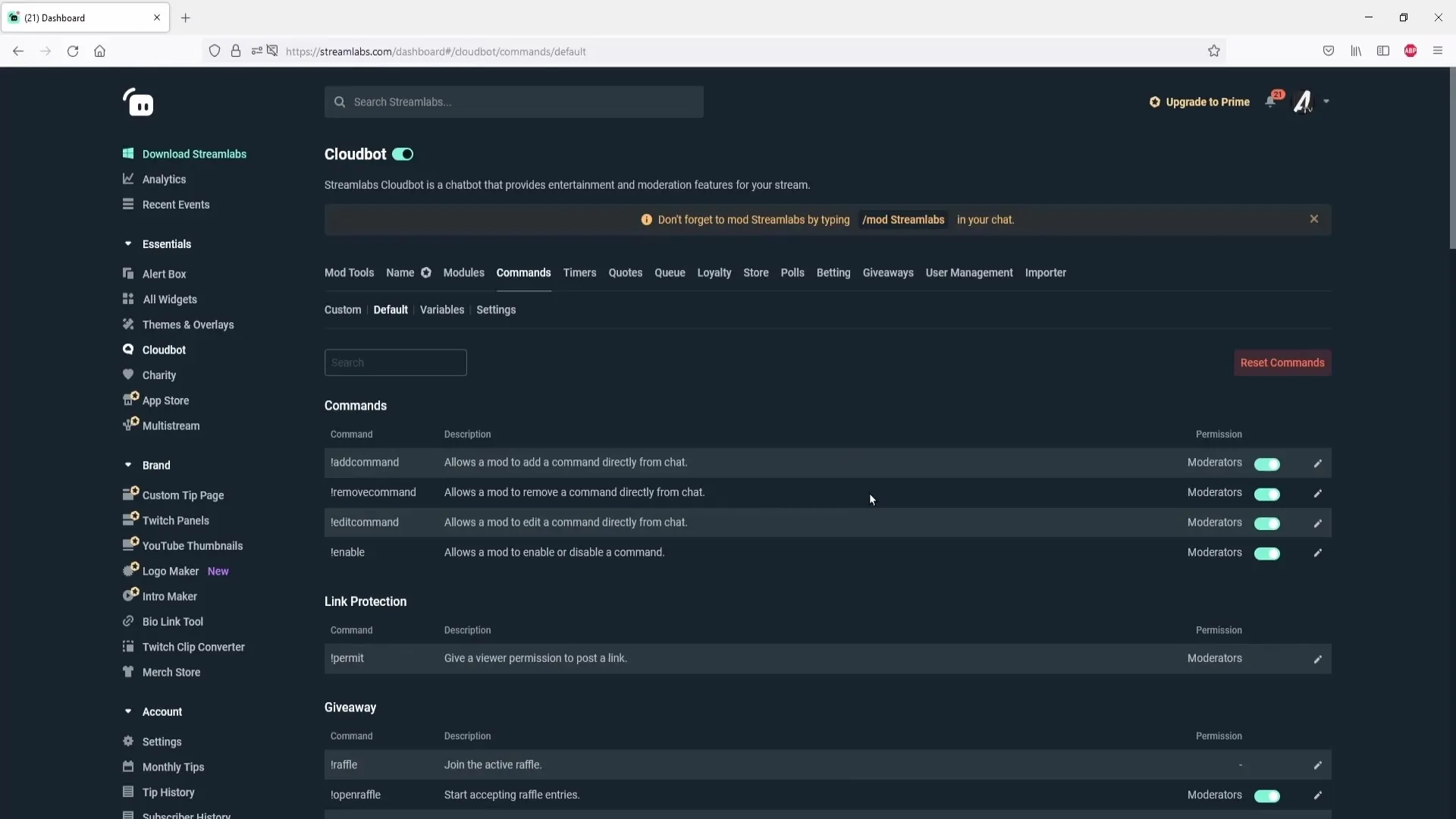
Step 4: Delete a Command
If you want to delete a command, type the command!remove command
Step 5: Edit a Command
If you want to revise an existing command, use the command!edit command
Step 6: Set and Restrict Command Permissions
You can set permissions for each command to determine who can use them. For instance, if you want to make sure only moderators can use a command, adjust the permissions accordingly.
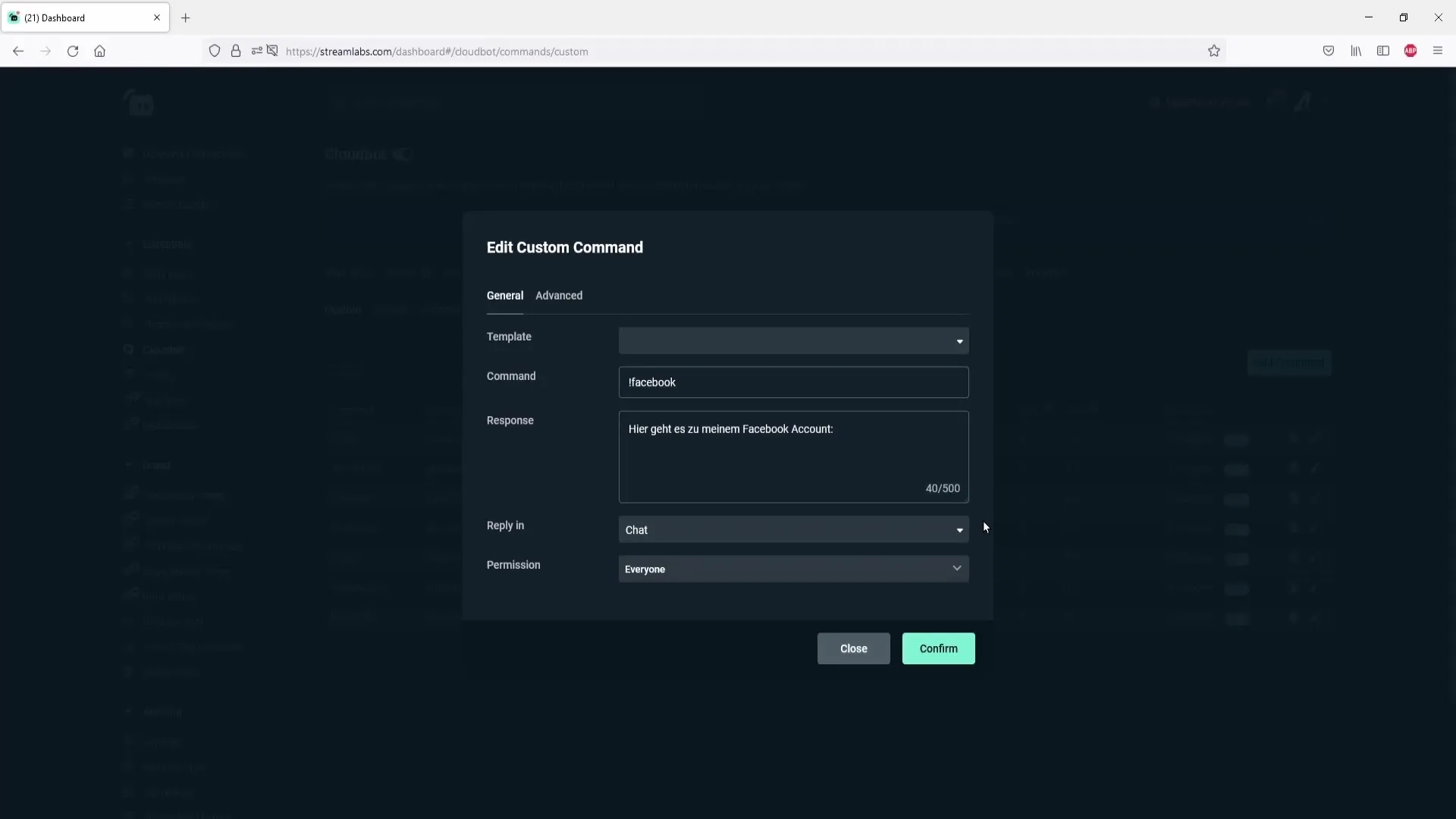
Step 7: Set Cooldowns for Commands
To prevent spam, you can set cooldowns for your commands. This means that viewers can only use the command every 30 seconds or any other time interval you specify.
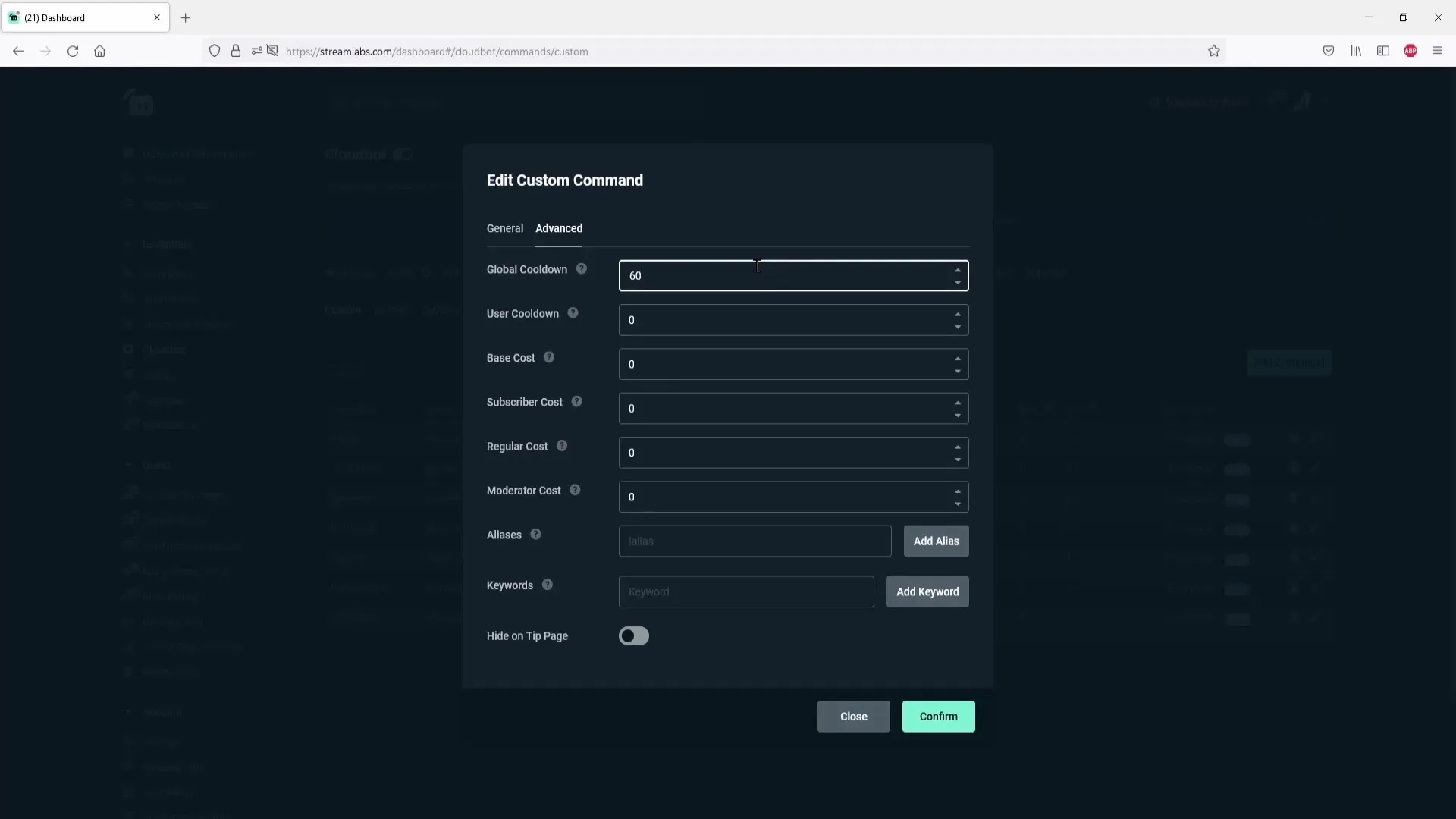
Step 8: Use Variables to Personalize Commands
Variables like {username} can be used in your responses to make commands more interactive. For example: "Thank you, {username}! You have received 10 points." This personal address fosters a connection with your audience.
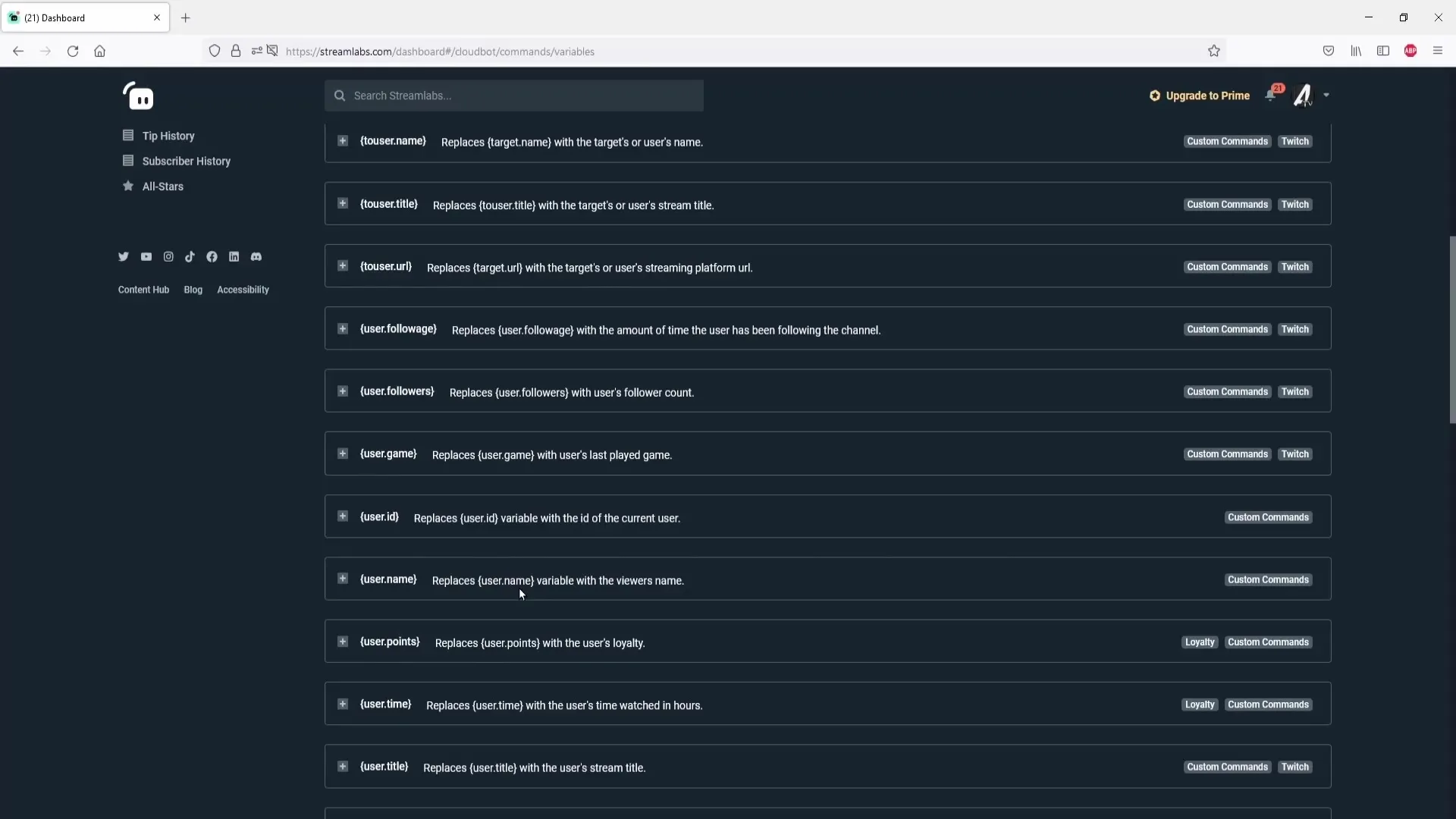
Step 9: Add Command Targets and Aliases
If desired, you can also create aliases for a command so that viewers can use different commands to receive the same response. Simply add the aliases under the advanced settings for each command.
Step 10: Test Your Commands
Before going live, test your new commands in chat to ensure they work correctly. Check if the messages are displayed as intended.
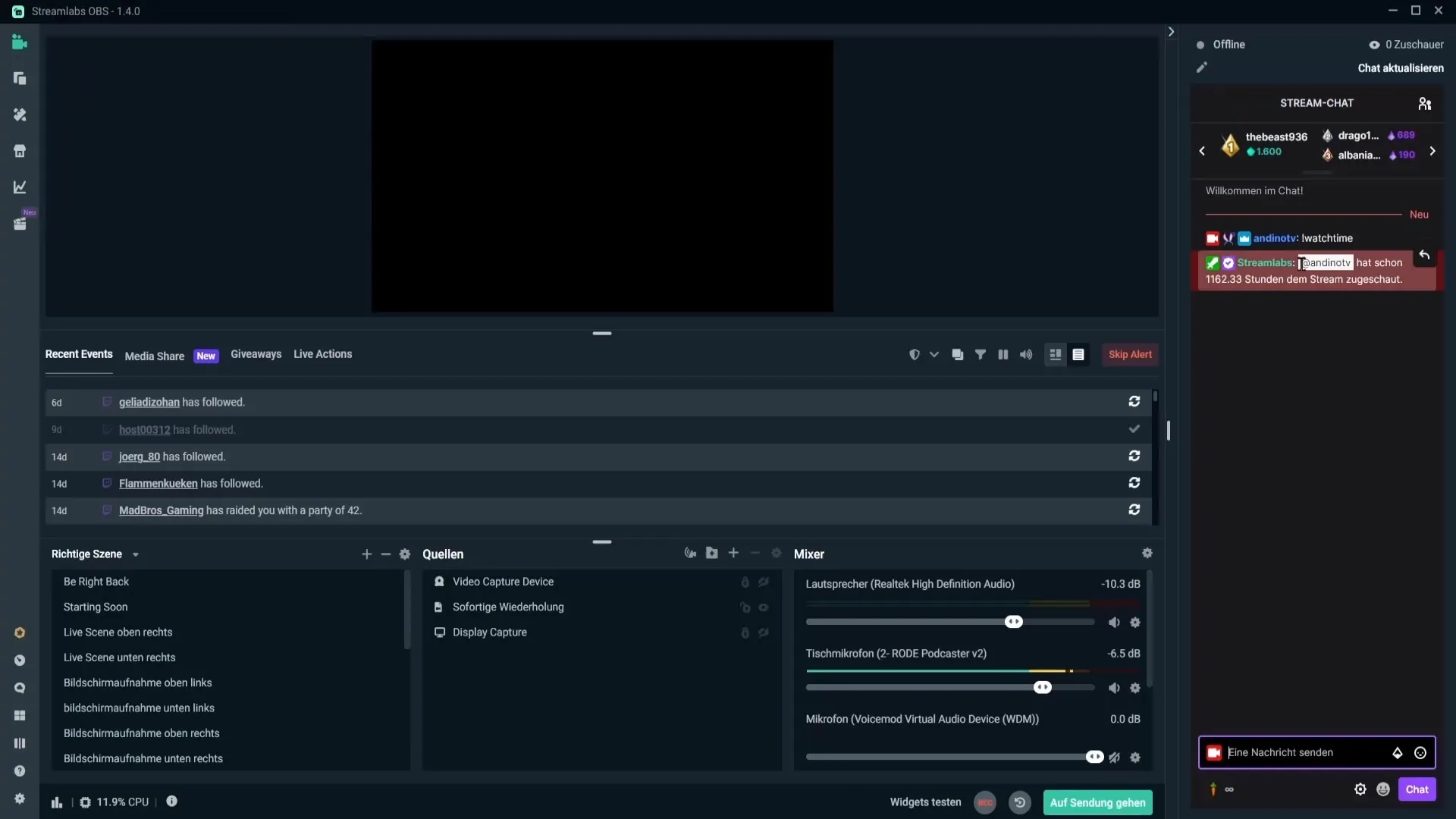
Summary
Setting up commands in Streamlabs OBS is a simple but important step to enhance your streaming interaction. You can use them to provide relevant information to your viewers, strengthen viewer engagement, and improve the dynamics of your stream. Experiment with the different possibilities and create a welcoming and informative environment for your audience.
Frequently Asked Questions
How do I add a new command?You add a new command by typing the command!add command in the chat.
What should I do if a command is not working?Check if the Cloudbot is enabled and if all settings are correctly configured.
How can I delete a command?Type the command!remove command in the chat to remove a command.
Can I set permissions for commands?Yes, you can set permissions for each command to determine who can use it.
What are variables and how do I use them?Variables are placeholders that can be replaced with specific information, such as a viewer's username.
